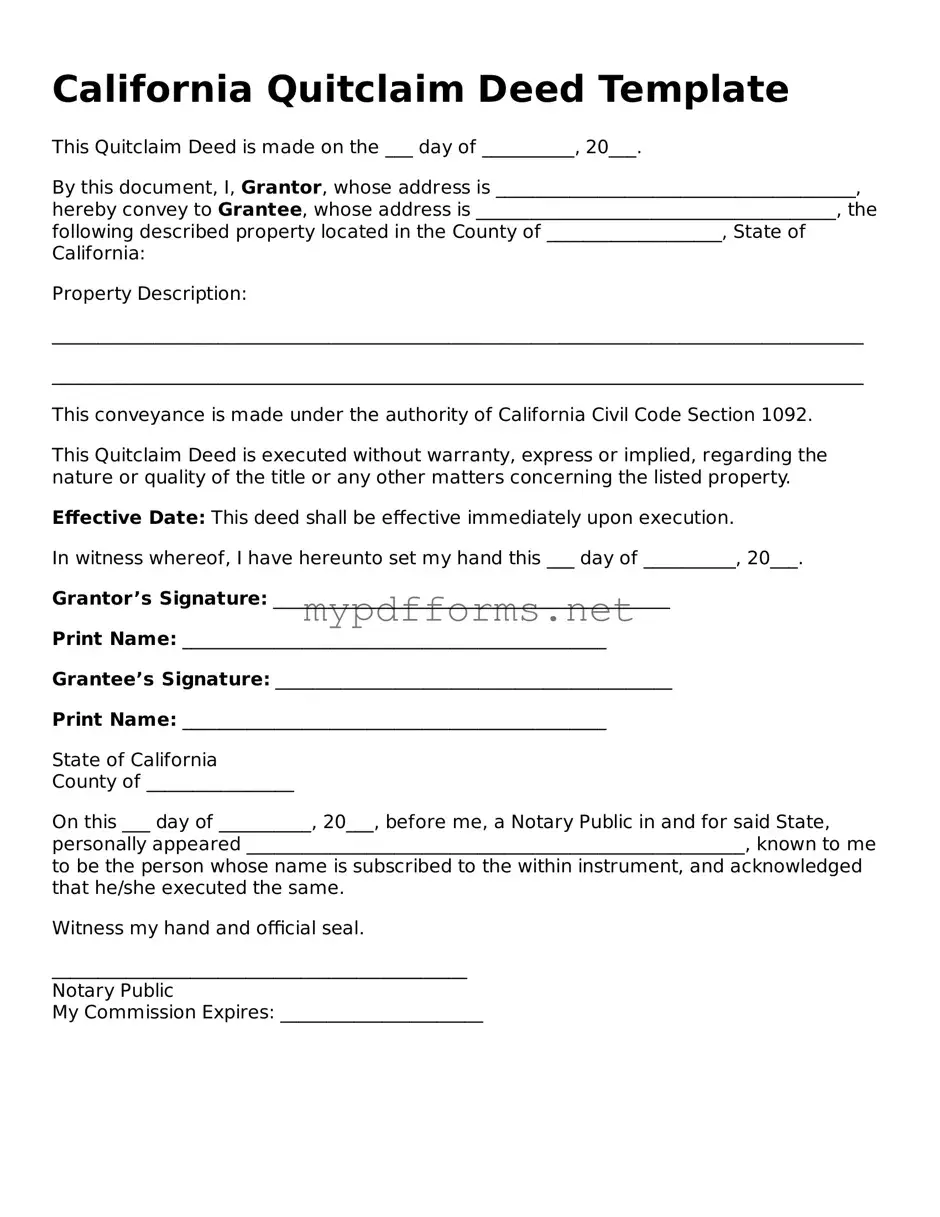A warranty deed is a document used to transfer property ownership. Unlike a quitclaim deed, a warranty deed guarantees that the grantor holds clear title to the property and has the right to sell it. The grantor also assures the grantee that the property is free from any liens or claims. This added layer of protection makes warranty deeds more secure for buyers, as they can be confident in their ownership rights.
A grant deed is similar to a quitclaim deed in that it transfers ownership of real property. However, a grant deed includes specific assurances from the grantor, such as the promise that the property has not been sold to anyone else and that there are no undisclosed encumbrances. This provides a degree of security for the grantee, making it a more reliable option than a quitclaim deed.
A bargain and sale deed conveys property ownership without any warranties. It implies that the grantor has an interest in the property but does not guarantee that the title is clear. Like a quitclaim deed, it transfers ownership but offers less protection to the grantee. This type of deed is often used in transactions where the buyer is willing to accept some risk regarding the property’s title.
A special warranty deed is a type of deed that provides limited warranties. It guarantees that the grantor has not caused any title issues during their ownership. Unlike a quitclaim deed, which offers no warranties, a special warranty deed assures the grantee that the grantor has not done anything to harm the title. This makes it a middle ground between a quitclaim deed and a warranty deed.
A leasehold deed conveys the rights to use and occupy a property for a specified period. While it does not transfer ownership like a quitclaim deed, it allows the lessee to enjoy the property during the lease term. The key difference lies in the fact that the leasehold deed does not convey full ownership rights, making it distinct from a quitclaim deed.
A deed of trust is used in real estate transactions to secure a loan. It involves three parties: the borrower, the lender, and a trustee. The property acts as collateral for the loan. While a quitclaim deed transfers ownership, a deed of trust serves a different purpose by establishing a security interest in the property until the loan is repaid.
When navigating the complexities of vehicle sales and registration in Illinois, it is crucial to have the right documentation, such as the Illinois VSD 190 form, which plays a critical role for dealers and remitters. Ensuring compliance in these transactions can streamline operations effectively, making it essential for businesses to familiarize themselves with these requirements. For more information and resources, you can visit Illinois Forms.
An easement deed grants a right to use a portion of someone else's property for a specific purpose. It does not transfer ownership but allows the easement holder to access or use the property in a defined way. This differs from a quitclaim deed, which fully transfers ownership rights rather than granting limited use rights.
